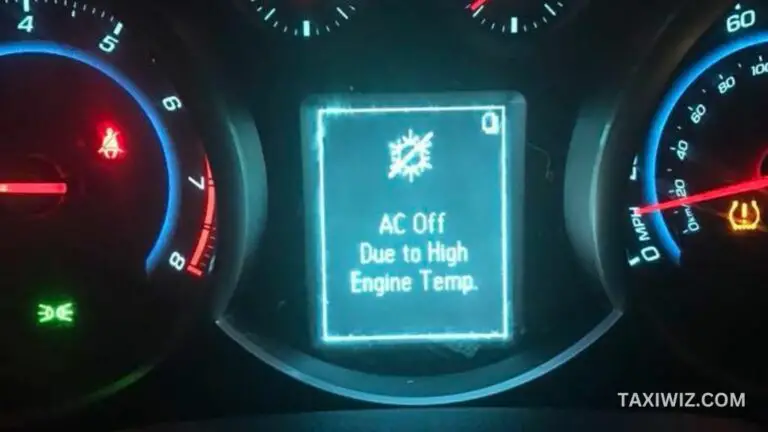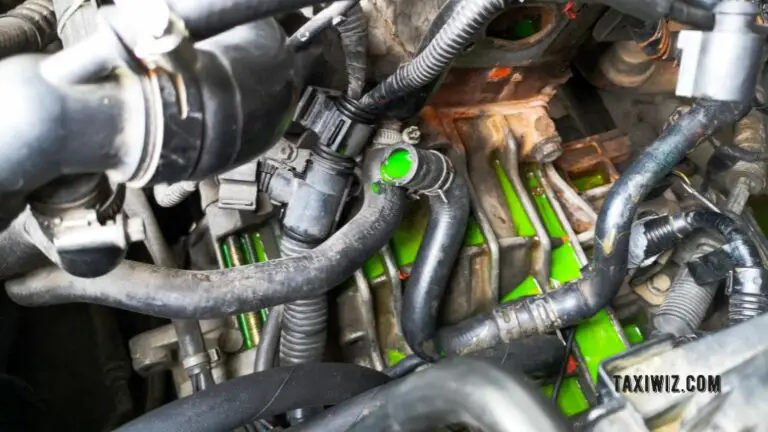Engine Temp Spikes Then Returns to Normal – How To Fix?
Have you ever noticed your car’s engine temperature gauge spike up suddenly and then return to normal? If yes, you might be wondering what causes such a sudden increase in engine temperature. You may think if it’s something to be worried about.
If you’re experiencing this, you need to exercise caution. Because it may be a sign of issues with the engine or a problem related to the coolant and air conditioning system.
In this guide, we will explain the causes of engine temp spikes and provide solutions to fix the issue. We will know the other additional information as well. So, let’s get started!
Why Engine Temp Spikes The Returns to Normal? – Causes and Fixes
So, what does it mean if my car engine temp spikes and then returns to normal? It means your car might have
- Low coolant level
- Faulty thermostat
- Failing water pump
- Damaged radiator
Please be remembered that these are only some frequent issues. You could run into some additional issues. Take appropriate action if you find any further issues.
Now let’s start the in-detailed discussion of the problems above and their potential fixes.
Low Coolant l Level –
Low engine coolant levels can be caused by several factors. These may include external coolant leaks, a cracked EGR cooler, or a damaged cylinder gasket. Additionally, a faulty radiator cap and a defective intake manifold gasket also can cause this issue.
Fix
Follow these simple steps to ensure that the coolant level in your car is at the recommended level:
Step 1: Check the coolant reservoir. The automobile manual has information on where to find the coolant reservoir.
Step 2: If the level is below the minimum, it has to be topped up. If it is beyond the maximum, any extra liquid needs to be drained right away.
Step 3: In this stage, you will blend the coolant. If you’re using a non-premixed coolant, combine the necessary antifreeze with distilled water. The usual ratio is equal usually.
Step 4: Always cover the cap with a cloth when unscrewing it in case pressurized water escapes from the coolant reservoir.
Step 5: Insert a funnel Since coolant is toxic to humans and animals.
Step 6: Fill with coolant Slowly to the maximum marker.
Step 7: Change the cap Until you hear a click, tighten the cap back on. By doing this, it is secured and no coolant will leak.
Faulty Thermostat –
A faulty thermostat can cause the engine temperature to spike and return to normal. When the thermostat gets stuck in the closed position, the coolant cannot flow to the radiator to be cooled, causing the engine to overheat quickly.
Conversely, if the thermostat gets stuck in the open position, the engine will not warm up properly. You may notice a lack of heat coming from the heater on the later consequence. This can lead to reduced fuel efficiency and increased emissions.

Fix
Following steps can be performed in such a situation
Step 1: Make sure the engine is completely cool before you start working on it.
Step 2: Locate the radiator drain plug, which is usually at the bottom of the radiator.
Step 3: Place the drain pan underneath it, then remove the plug to let the coolant drain out.
Step 4: Locate the thermostat housing, which is usually located at the engine end of the upper radiator hose.
Step 5: Use a socket wrench to remove the bolts that hold the housing in place and then remove the housing.
Step 6: Gently remove the old thermostat and the gasket if it’s stuck.
Step 7: Use a scraper or a wire brush to clean the gasket mating surfaces on both the housing and the engine.
Step 8: Make sure there are no old gasket materials or debris left on the surfaces.
Step 9: Insert the new thermostat into the housing with the spring side facing into the engine. Make sure it is sitting properly in the groove. If a new gasket is required, install it as well.
Step 10: Put the housing back in place and reinstall the bolts. Be careful not to over-tighten them.
Step 11: Refill the coolant with the appropriate type and amount, as specified in your car’s owner manual.
Step 12: Start the engine and let it run for a few minutes while monitoring the temperature gauge.
Step 13: Check for any leaks around the thermostat housing, and tighten any bolts that may be leaking.
Failing Water Pump –

If a water pump is faulty, it can be another potential issue for engine spike and then return to normal again. The water pump’s primary function is to circulate coolant through the engine’s cooling system, which regulates the engine’s temperature and prevents it from overheating.
Fix
You may go through the following steps in this situation
Step 1: To guarantee the best performance, think about replacing the driving pulley at the same time as the water pump. The driving pulley is pre-installed in some water pumps.
Step 2: Replace or loosen the belt if the tension is too tight, then reset the tensioner.
Step 3: Check the water pump for corrosion indicators such as coolant leaks.
Step 4: Replace or repair the water pump if there is evidence of corrosion.
Step 5: If the water pump is faulty and cannot be repaired, it should be replaced. This can be a complicated task that may require specialized tools and expertise. So it’s recommended to have called a professional mechanic to replace one.
Damaged Radiator –
The radiator helps to dissipate the heat generated by the engine, keeping it at a safe operating temperature. If the radiator is damaged or not functioning properly, it can lead to overheating of the engine.
When the engine overheats, it can cause a spike in the temperature gauge, and the engine may start to run poorly or even stall. However, as the engine cools down or the car is turned off, the temperature gauge will return to normal.

Fix
Fixing a damaged radiator in a car is a task that requires some mechanical skill and knowledge. Here are the steps to follow:
Step 1: Turn off the engine and let the radiator cool down.
Step 2: Have your eyes on the temperature gauge before turning off the engine. If it’s changing too frequently, your car has a coolant problem. It may be running at a low coolant level.
Step 3: Drain the coolant from the radiator.
Step 4: Change the radiator cap. Please be informed about your exact radiator cap. Go through the manufacturer manual to know which one is best for you.
Step 5: Once you have repaired or replaced the damaged section, it’s time to reinstall the radiator.
Step 6: Make sure all hoses and wiring are reconnected properly and all clamps are tightened securely.
Step 7: Check for any leak in the radiator.
Step 8: Repair leaks using a leaking seal. It will give you an immediate solution. Our recommendation () can be helpful in this case.
Step 9: Refill the radiator with coolant.
Step 10: Start the engine and let it run for a few minutes.
Step 11: Check for leaks and ensure the radiator is functioning properly.
Frequently Asked Questions (FAQs)
Don’t go away and stay here to know a little more about the context.
Can extreme weather conditions cause my engine temperature to spike and return to normal?
Yes, extreme weather conditions, such as hot summer days or heavy traffic can cause your engine temperature to spike temporarily. However, if the temperature continues to fluctuate or remains consistently high, there may be an underlying issue that needs to be addressed.
Is it usual if the engine spikes and then runs normally?
It can be happened due to plenty of reasons. But primarily, it can be happened due to an old thermostat. If a thermostat gets older, it might not be able to read the temperature correctly. So, it is wise to check your car with a mechanic.
Conclusion
All in all, engine temp spikes and then returns to normal seem to be an issue to be taken seriously. This guide has provided detailed causes and solutions to fix the issue. These are including low coolant levels, a faulty thermostat, a failing water pump, and a damaged radiator.
If you experience any of these problems, it is essential to take the appropriate action immediately to prevent further damage. Maintaining proper cooling levels, and checking for any seals in the radiator and water pump maintenance may help you in this circumstance.
In summary, if your car engine spikes, you need to check certain mechanical parts for safety. By taking proper preventative measures, you may avoid your car being damaged on a bigger margin.
Related Posts:





